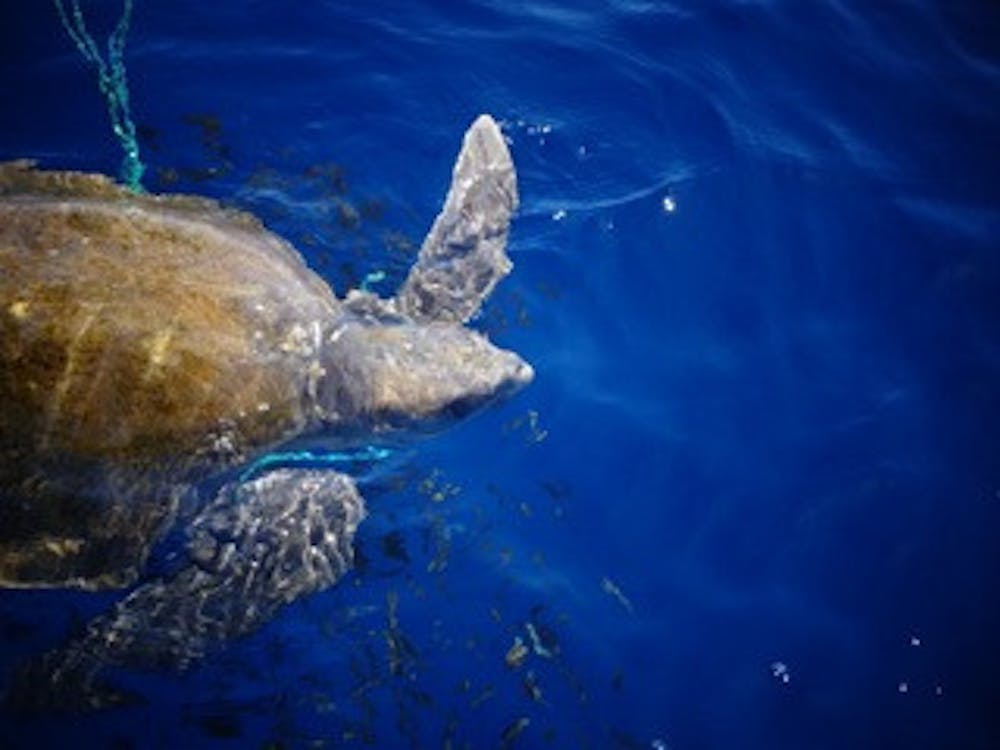
When I signed up for my J-term program this winter, Sustainability and Tropical Ecosystems of Costa Rica, it wasn’t with complete confidence. Sure, I was a sustainability co-major but my only background was an intro course I had just taken the previous semester. As I scanned through the assignments, the research project abroad, the expectations, all I could think was: What if I can’t do it? I barely knew anyone going on the trip, I’d never been to Costa Rica, and I’d never been out of the country for this long before.
Yet the other option—a long six weeks of HGTV binging at home—pushed me to commit to the program. Plus, did I mention it was Costa Rica?
I was still nervous when I arrived in San Jose a few days after Christmas, rattled with the unknowns ahead, but looking back now I can easily say those twenty-two days were some of the best of my life.
 From the minute we landed in Costa Rica, we were off. The trip was high-paced; almost every other day we were on the road, off to a new location. We explored tropical rainforests, dry forests, cloud forests, beaches and mangroves and traveled all around the country in our bus, and then later on boats. As every ecosystem changed, it was hard to believe we were in the same country. In only a few hours we went from mossy, old growth forests with epiphytes and dense canopies to dry forests that resembled deserts; from 65 mph winds in the hills of Monteverde to the heat of Osa beaches.
From the minute we landed in Costa Rica, we were off. The trip was high-paced; almost every other day we were on the road, off to a new location. We explored tropical rainforests, dry forests, cloud forests, beaches and mangroves and traveled all around the country in our bus, and then later on boats. As every ecosystem changed, it was hard to believe we were in the same country. In only a few hours we went from mossy, old growth forests with epiphytes and dense canopies to dry forests that resembled deserts; from 65 mph winds in the hills of Monteverde to the heat of Osa beaches.
We saw sloths hanging from trees and on one of our last nights, as we hung in hammocks after class, watched one move limb-to-limb a few feet right above us. We saw Jesus lizards (famously named for their ability to walk on water), green iguanas, agoutis, bat colonies, guans, jacawas, toucans, scarlet macaws, green macaws, tapirs, spider monkeys, white-faced capuchins, endangered Olive Ridley sea turtles, bottlenose dolphins, blue-jean frogs, wolf spiders, red-eyed tree frogs, yellow winking pit-vipers, anteaters, and a venomous fer-de-lance. And that’s just to name a few.

We had class at night during which we discussed readings from our course book, and what startled me most was the level of interest from the students and professors. Class consisted of discussion and debates, and of synthesizing what we’d seen that day with what we were learning about; it was seeing sustainable practices between organic farming to mangrove conservation to eco-tourism first-hand. The discussions were never forced or bare, despite how tired everyone was.
We hiked through forests and swam in waterfalls, even venturing off at night with our flashlights (and guides, of course) and immersing ourselves in the nocturnal world of the jungle. We zip-lined through the cloud forest and swam in the Pacific, even untangling an Olive Ridley from a fishing rope caught around its fins.
We earned six credit hours in 22 days, and while that sounds rushed, I honestly believe I learned more about sustainability and the environment in those short weeks than I would have from a semester in a classroom.
When you hear about deforestation and pesticides in an isolated, non-affected location, that’s one thing. Sometimes, for people that are passionate, that’s enough. But when you’re in the mangroves and you see first-hand the gaping holes where trees used to be, trees that were stripped for timber and dying from sea level rise; when you see a sea turtle wrapped up in fishing lines right before your eyes; when you see the extensive process organic coffee farmers go through, and the economic inequality they face—all of this becomes real. It’s no longer a picture on a PowerPoint. It takes being there.
Going to Costa Rica for J-term offered opportunities I otherwise never would have experienced; it introduced me to strangers who became my friends and brought adventure to every day. But, most of all, it confirmed my interest in sustainability and conservation and as I boarded the plane back to New York, all I could think about was when I could return again.
Winter in Paradise: How I Spent my J-Term

